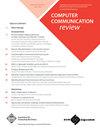一个开放的可定制云网络的案例
IF 2.8
4区 计算机科学
Q3 COMPUTER SCIENCE, INFORMATION SYSTEMS
引用次数: 0
摘要
在过去的几年里,云计算正在改变网络的格局。今天,主要云提供商的首要任务是吸引尽可能多的组织使用他们自己的云。为此,云提供商提供了新一代的托管网络解决方案,将企业的场所连接到他们的云。为了更好地为客户服务并快速创新,主要的云提供商目前正在构建自己的“私有互联网”,这是一种独特的方式。另一方面,不希望被供应商锁定的客户,以及希望在使用跨多个云和可能的自己的场所的最佳任务服务方面具有灵活性的客户,寻求能够跨云提供智能覆盖连接的解决方案。这些发展的结果是封闭的特殊解决方案的倍增,而不是开放的标准化生态系统。在这篇社论中,我们论证了这样一个生态系统的可取性,概述了主要需求,并概述了可能的解决方案。我们将企业作为我们的主要用例,并通过它说明主要思想,但是相同的原则适用于各种不同的用例。本文章由计算机程序翻译,如有差异,请以英文原文为准。
A case for an open customizable cloud network
Cloud computing is transforming networking landscape over the last few years. The first order of business for major cloud providers today is to attract as many organizations as possible to their own clouds. To that end cloud providers offer a new generation of managed network solutions to connect the premises of the enterprises to their clouds. To serve their customers better and to innovate fast, major cloud providers are currently on the route to building their own "private Internets", which are idiosyncratic. On the other hand, customers that do not want to stay locked by vendors and who want flexibility in using best-for-the-task services spanning multiple clouds and, possibly, their own premises, seek for solutions that will provide smart overlay connectivity across clouds. The result of these developments is a multiplication of closed idiosyncratic solutions rather than an open standardized ecosystem. In this editorial note we argue for desirability of such an ecosystem, outline the main requirements and sketch possible solutions. We focus on enterprise as our primary use case and illustrate the main ideas through it, but the same principles apply to various different use cases.
求助全文
通过发布文献求助,成功后即可免费获取论文全文。
去求助
来源期刊

ACM Sigcomm Computer Communication Review
工程技术-计算机:信息系统
CiteScore
6.90
自引率
3.60%
发文量
20
审稿时长
4-8 weeks
期刊介绍:
Computer Communication Review (CCR) is an online publication of the ACM Special Interest Group on Data Communication (SIGCOMM) and publishes articles on topics within the SIG''s field of interest. Technical papers accepted to CCR typically report on practical advances or the practical applications of theoretical advances. CCR serves as a forum for interesting and novel ideas at an early stage in their development. The focus is on timely dissemination of new ideas that may help trigger additional investigations. While the innovation and timeliness are the major criteria for its acceptance, technical robustness and readability will also be considered in the review process. We particularly encourage papers with early evaluation or feasibility studies.
 求助内容:
求助内容: 应助结果提醒方式:
应助结果提醒方式:


